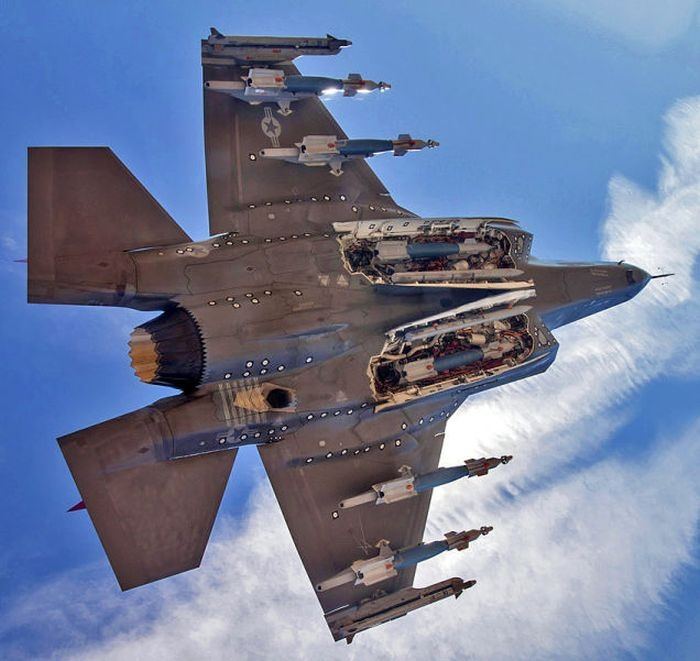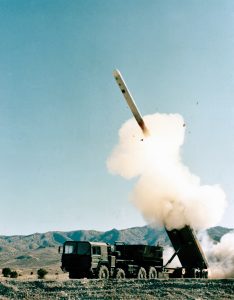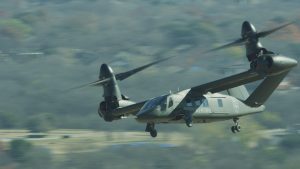House Armed Services Scrutinizes F-35 Costs, ABMS, Army Modernization
Posted on

F-35 with open weapons bay
CAPITOL HILL: A key congressional committee is demanding more information from the Pentagon on an array of weapons. The biggest ask: an independent cost estimate on the massive F-35 Joint Strike Fighter program to compare against official figures from the Joint Program Office.
“It’s been a while since we’ve seen an independent cost estimate from the services” — the Air Force, Navy, and Marines all use F-35 variants — as well as the Pentagon’s Cost Assessment & Program Evaluation office (CAPE), a House Armed Services Committee staffer told reporters this afternoon. The committee’s draft of the annual National Defense Authorization Act also seeks details on how the Pentagon plans to control the long-term operations, maintenance, and sustainment costs of the stealth fighter, a timeline to both patch and rebuild the troubled ALIS maintenance system, and more information on the plane’s critical upgrade Block IV software upgrade. The HASC did reject suggestions to break out Block IV as a separate Major Defense Acquisition Program (MDAP), saying that wasn’t necessary to improve oversight.

F-15
That doesn’t mean the committee wants to cut the F-35 buy. Far from it: While today’s briefings and releases gave no monetary details — those will come out later in June — the draft bill does call for buying at least “an economic order quantity” of fighters to get efficiencies of scale. It also authorizes the program to “buy to budget,” meaning that if it negotiates for a lower price per plane than the budget figure was based on, the military can buy more F-35s rather than returning the savings to the Treasury.
The committee also asked for more details on the controversial purchase of new but non-stealthy F-15EX fighters to replace rapidly aging F-15Cs.
“If the Air Force wants to go forward with this program, there’s some documentation that they owe us,” a staffer said. What kind: a formal acquisition strategy, a program funding baseline, and a test and evaluation plan — all the due diligence for a major acquisition program. The draft bill would only allow purchase of two prototype aircraft until the Pentagon provides the necessary documentation.
The bill would also require the Air Force and Special Operations Command to jointly figure out their next steps on a long-delayed low-cost Light Attack aircraft — probably a propeller plane, perhaps a stripped-down jet — to support friendly forces against guerrillas lacking anti-aircraft weapons.
“Generally speaking, I think we’re satisfied [so far],” a staffer said. “The question is where is it going?… Is it an Air Force program? Is it a SOCOM program?” And, once the planes are bought, who will pay to operate, maintain and sustain them for decades to come?

A-29 Super Tucano being loaded with weapons
But at least Congress knows what the Air Force is buying with the F-15EX and Light Attack efforts: airplanes. That’s not so with the Advanced Battle Management System (ABMS), which would replace the venerable and easily targetable AWACS radar plane with an ill-defined “system of systems” that would network together everything from — potentially — manned aircraft to drones to satellites.
“Right now it’s just a concept, it’s not a real program,” a staffer said. “We’re trying to get more detail out of the Air Force….When you say a ‘system of systems,’ it’s pretty vague.”
The subcommittee didn’t mention any specific action they were taking to preserve the existing AWACS fleet until the replacement is clearer. But, in a closely related move, they forbade retirement of the RC-135 Rivet Joint recon plane until the Defense Secretary certifies there’s a replacement.

BAE Griffin III, a leading contender to replace the M2 Bradley
Pounding The Ground
The committee is cautiously optimistic on the Army’s new Futures Command and its rapidly evolving Big Six modernization program. But it’s already zeroing in on a number of the new weapons where it’s not sure technology is ready for prime time.
“I think the Army’s modernization program … is generally coherent, it’s generally funded,” one staffer said in less than ringing praise. “Its affordability is perhaps to be determined.” And there are specific areas — the ones the draft bill singles out — where “technology is probably the biggest question. [It may be] not mature enough.”
What are those programs?

A test shot of the Air Force’s BGM-109G Ground-Launched Cruise Missile (GLCM) during the Cold War
The bill wants the Pentagon to come up with a strategy to integrate various long-range ground-based missiles to take on both land and naval targets. While this would be a joint effort, it’s the Army that’s made such Long-Range Precision Fires it’s No. 1 priority and that has the potential to dramatically increase its surface-to-surface firepower when the INF Treaty expires this August.
The bill would demand quarterly reports on the Army’s effort to rapidly replace the M2 Bradley troop carrier with a new Optionally Manned Fighting Vehicle. The name refers to the plan for machine to operate at least part of the time by remote control — and in the longer term, directed by an onboard artificial intelligence — with no humans beings aboard. OMFV is the most urgent program within the Army’s Next Generation Combat Vehicles (NGCV) portfolio, which is No. 2 of its Big Six priorities.
The committee also wants a comprehensive “strategic plan and modernization roadmap” for the Army’s No. 3 priority, Future Vertical Lift, the effort to replace its current helicopters with revolutionary new high-speed aircraft. FVL is racing towards critical decisions on a new light scout, the Future Attack Reconnaissance Aircraft; a mid-sized Future Long-Range Assault Aircraft to replace the UH-60 Black Hawk; and a family of drones.
In the longer term comes the question of what aircraft will replace the CH-47 Chinook, which the Army decided to stop buying as of 2021. While the committee isn’t considering the 2021 budget yet, to reverse the Army’s decision, they’d have to restore $28 million to the ’20 budget now on the table for long-lead advanced procurement to get ready for ’21. Those funding decisions won’t be revealed this week, staff reiterated today, but “the committee is interested and concerned with the Army’s long-range plans for heavy lift.”

Sikorsky’s S-97 Raider, a leading candidate for the Future Attack Reconnaissance Aircraft, shows off its agility.

Bell V-280 Valor, the leading candidate for the Future Long-Range Assault Aircraft
The committee also wants to know what the Army’s plans are for the Indirect Fire Protection Capability (IFPC), the future linchpin of its battlefield anti-aircraft and missile defense systems. That includes both the near-term purchase of off-the-shelf Iron Dome systems from Israel as an “interim” IFPC and the longer-term development of a permanent solution.
The committee isn’t passing judgment as to whether any of these programs is overreaching for new tech, staff emphasized. “We don’t know that yet, so we’re trying to legislate up front to get the oversight at the start.”
As for the massive reorganization of the service’s acquisition system into a new Army Futures Command, the committee is watching carefully but hasn’t yet seen any shortfalls that would require legislative action.
“There’s still a lot to sort out,” given this is the Army’s biggest reorganization in 40 years, a staffer said, especially since it touches on complex laws and regulations governing procurement programs. “There’s alot of uncertainty associated with what some of that means and we’re playing close attention… [but] I don’t think we found anything to actually legislate on.”
Another staffer added: “Yet.”
Subscribe to our newsletter
Promotions, new products and sales. Directly to your inbox.
